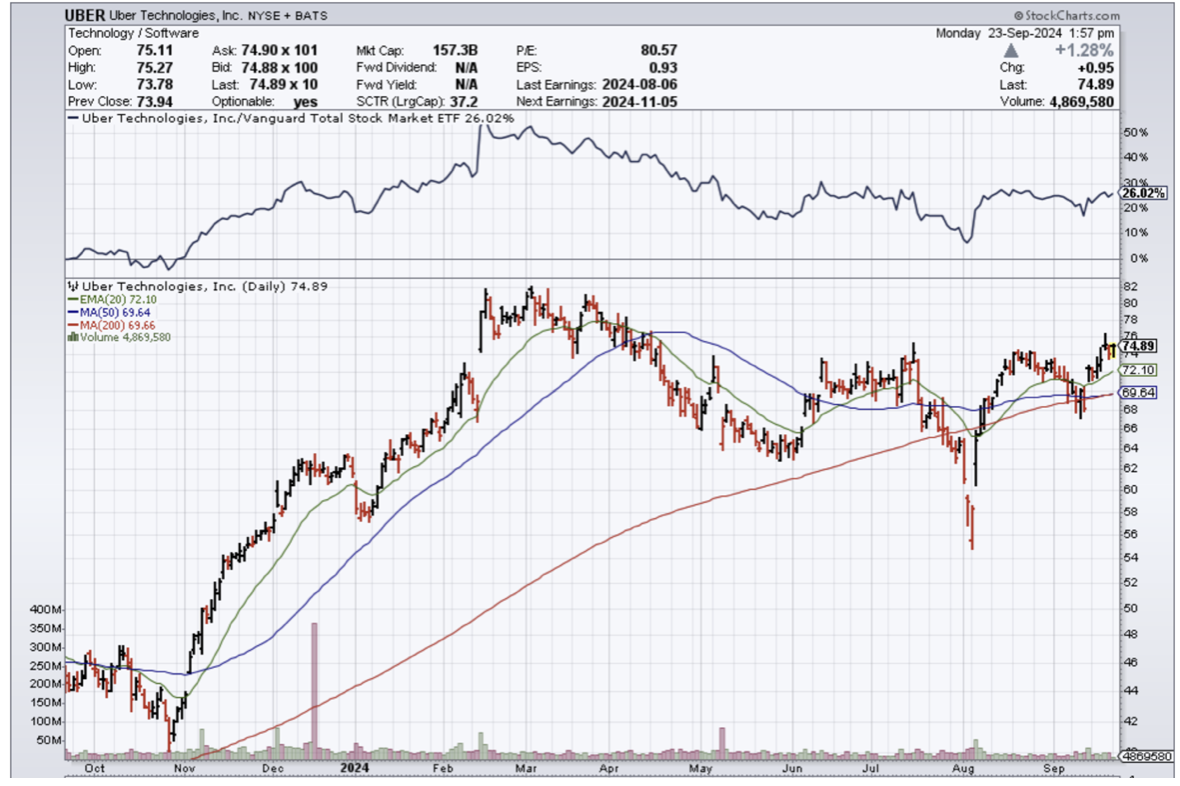I do believe companies heavily involved with gig workers will not experience a boon in the stock price in the near future.
Consumers are tapped out and there is not much more pricing power they can pass on to manufacture higher profits in the short run.
There is a chance the tide will rise with all boats, but I would wait this one out in gig work stocks.
As a cultural phenomenon, the gig economy is here to stay until they get muscled out by technology.
Americans are used to the 24-hour on-demand goods and services offered by gig workers.
The number one expense line item for these tech companies is labor.
They are actively working to try and reduce the burden.
I believe they are holding out until the vaunted robotaxi is green-lighted.
This change will crater labor expense to a pittance with most of the labor costs flowing towards the managers and executives.
It is the holy grail of the tech industry and we are rapidly approaching this inflection point.
These companies have come a long way.
In 2010, the smartphone application offered a new competitor to the taxicab industry by linking a paying passenger with a private driver using his or her own car.
The largest services are still focused on transportation. Uber and Lyft dominate the on-demand ride business.
Massive retailers like Walmart and Amazon joined in with their own on-demand platforms: Spark Driver and Amazon Flex.
Gig workers are recruited with the situation of flexible hours to earn additional income. However, as independent contractors, gig workers are not entitled to traditional employment benefits like health insurance, and they must take on additional occupational risks, equipment costs, and tax burdens.
In a 2024 economic impact report, Flex, a federal lobbying association supported by DoorDash, Grubhub, HopSkipDrive, Instacart, Lyft, Shipt, and Uber, estimated there were about 7.3 million “active drivers and delivery partners on major rideshare and delivery platforms” in 2022.
A 2022 report published by the consultancy McKinsey & Co. surveyed workers and estimated as many as 58 million Americans, or 36 percent of the U.S. workforce, did some gig work that year.
In its Securities and Exchange Commission filings, Uber describes the classification of its drivers as “employees, workers, or quasi-employees” as an “operational risk” to its business. The same document details the various legal and political challenges involved in maintaining independent contractor status.
Uber’s latest quarterly filing, published in August, said that if drivers win the reclassification through legal means or the passage of new laws, the company would incur significant expenses for compensating drivers and would pass its elevated costs onto riders. Uber also argues reclassification would limit its ability to find workers due to a loss of flexibility.
Uber is smart at attempting to root out the labor expenses. If robotaxis are integrated into the business model, the stock would increase by 500%.
In the meanwhile, workers forget ahead hoping to procure more benefits from Uber.
Uber is hell-bent on avoiding the financial toll of paying full-time workers and will indefinitely try to pin the label of independent contractor on its workers.
This existential threat will end up in courtrooms and Uber has good enough lawyers to stall out the lawsuits.
All eyes are on Tesla and Elon Musk to give insight into what the future of gig work and autonomous transportation looks like.
Uber knows it cannot maintain the status quo and something must be done to cut labor costs.
If that does happen, the stock will quadruple in short time.
As for the short-term, buy big dips in Uber stock.


